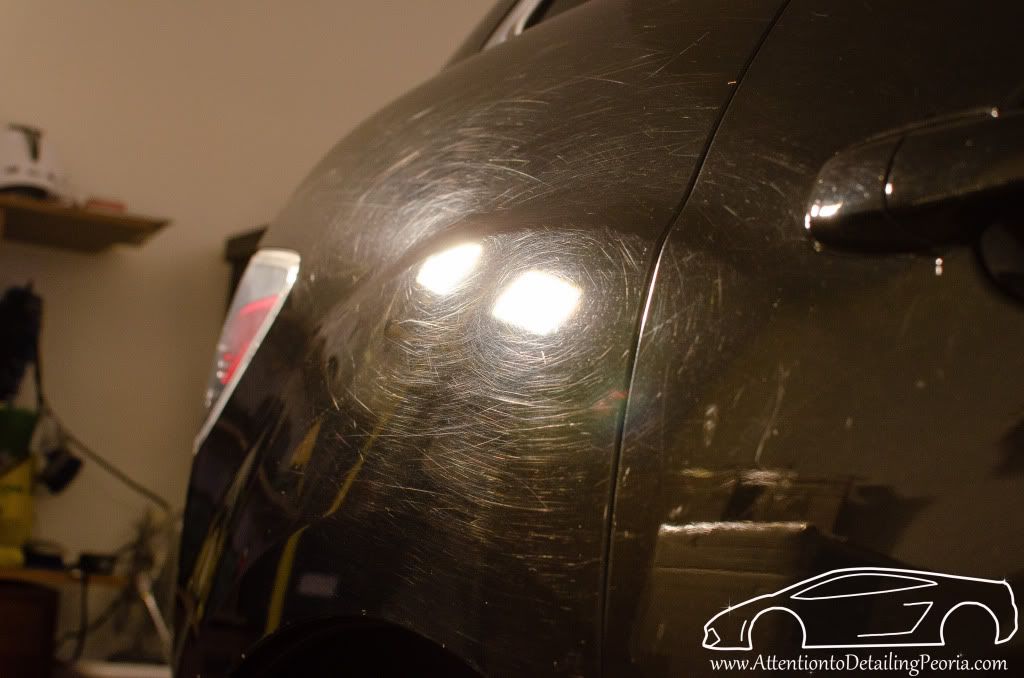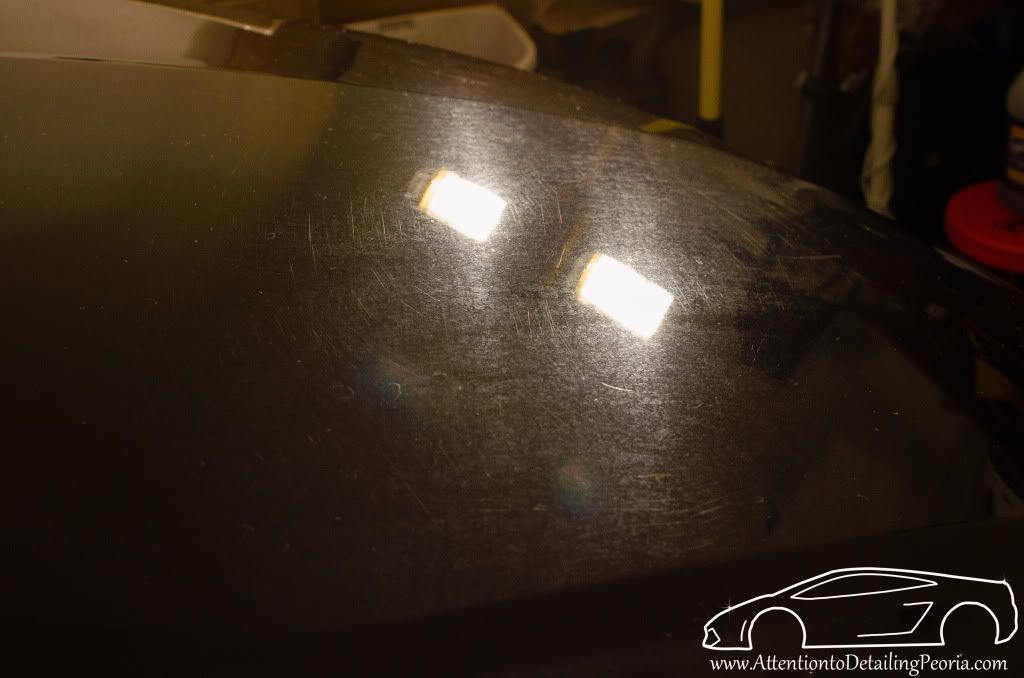zmcgovern45
New member
- Sep 5, 2012
- 3,443
- 0
So my fiance just bought a 2010 Mazda CX-7 a couple of months ago. I knew it needed some work when she bought it, but it was a great price and was exactly what she was looking for.
I recently purchased a paint thickness gauge and decided to wash the car and take some readings tonight since it was finally a bit warmer here in the Midwest.
The readings were surprisingly low! The lowest I have seen, actually. The readings averaged around 70 microns throughout the entire car. I am used to seeing 100-150ish as "normal" so I'm not sure exactly how to proceed with this new found information. The original plan was to do a 2 step correction to achieve 80-90% correction and then coat it with 22ple.
To be honest, I was feeling antsy this winter and decided to clay the car and do a test spot while I was at it (I did not have a PTG at this time). I used D300 + MF Cutting Pad and followed up with M205 on a polishing pad... it came out fine, no signs of compromising the clear coat or anything. Now, I take readings on my test spot and the areas directly surrounding it, and it seems the compounding and polishing only removed a few microns... is this to be expected? Minimal removal from compounding and polishing? Sounds plausible to me.
I would like some honest feedback from those of you who HAVE PTG's and have had to make these types of decisions with low readings on either your own car or a customer's car.
Here is what I am up against... plenty of scratches and swirls and a nice covering of hard water spots.



Thanks in advance!
I recently purchased a paint thickness gauge and decided to wash the car and take some readings tonight since it was finally a bit warmer here in the Midwest.
The readings were surprisingly low! The lowest I have seen, actually. The readings averaged around 70 microns throughout the entire car. I am used to seeing 100-150ish as "normal" so I'm not sure exactly how to proceed with this new found information. The original plan was to do a 2 step correction to achieve 80-90% correction and then coat it with 22ple.
To be honest, I was feeling antsy this winter and decided to clay the car and do a test spot while I was at it (I did not have a PTG at this time). I used D300 + MF Cutting Pad and followed up with M205 on a polishing pad... it came out fine, no signs of compromising the clear coat or anything. Now, I take readings on my test spot and the areas directly surrounding it, and it seems the compounding and polishing only removed a few microns... is this to be expected? Minimal removal from compounding and polishing? Sounds plausible to me.
I would like some honest feedback from those of you who HAVE PTG's and have had to make these types of decisions with low readings on either your own car or a customer's car.
Here is what I am up against... plenty of scratches and swirls and a nice covering of hard water spots.



Thanks in advance!


